| Subgenus | Image | Scientific name | Distribution |
|---|
| Pilocopiapoa(F.Ritter) Doweld—Ritter |  | Copiapoa solaris (F.Ritter) F.Ritter | Chile (Antofagasta to NW. Atacama) |
|---|
 | Copiapoa australis (Hoxey) Helmut Walter & Larridon | Chile (Atacama) |
| Unplaced |  | Copiapoa laui Diers | Chile (Antofagasta to NW. Atacama) |
|---|
| MammillopoaHelmut Walter & Larridon |  | Copiapoa humilis (Phil.) Hutchison | Chile (Antofagasta). |
|---|
| Copiapoa sect. Cinerei | | Copiapoa ahremephiana N.P.Taylor & G.J.Charles | Chile (W. & SW. Antofagasta). |
|---|
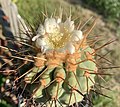 | Copiapoa gigantea Backeb. | Chile (Antofagasta to N. Atacama) |
 | Copiapoa cinerea (Phil.) Britton & Rose | Chile (Antofagasta to Atacama) |
| Copiapoa sect. Copiapoa | | Copiapoa angustiflora Helmut Walter, G.J.Charles & Mächler | Chile (SW. Antofagasta) |
|---|
| Copiapoa aphanes Mächler & Helmut Walter | Chile (SW. Antofagasta) |
 | Copiapoa atacamensis Middled. | Chile (Antofagasta to NW. Atacama) |
 | Copiapoa calderana F.Ritter | Chile (Antofagasta to Atacama) |
 | Copiapoa cinerascens (Salm-Dyck) Britton & Rose | Chile (SW. Antofagasta to NW. Atacama). |
| Copiapoa decorticans N.P.Taylor & G.J.Charles | Chile (Antofagasta to Atacama) |
| Copiapoa desertorum F.Ritter | Chile (Antofagasta to NW. Atacama) |
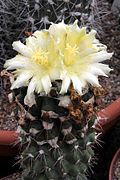 | Copiapoa esmeraldana F.Ritter | Chile (SW. Antofagasta to NW. Atacama) |
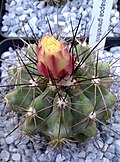 | Copiapoa grandiflora F.Ritter | Chile (SW. Antofagasta to NW. Atacama). |
 | Copiapoa hypogaea F.Ritter | Chile (SW. Antofagasta to NW. Atacama). |
| Copiapoa leonensis I.Schaub & Keim | Chile (Atacama). |
| Copiapoa longispina F.Ritter | Chile (Atacama) |
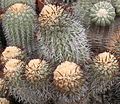 | Copiapoa longistaminea F.Ritter | Chile. |
 | Copiapoa marginata (Salm-Dyck) Britton & Rose | Chile (SW. Atacama to NW. Coquimbo) |
 | Copiapoa megarhiza Britton & Rose | Chile (Atacama). |
 | Copiapoa mollicula F.Ritter | Chile (Atacama to NW. Coquimbo). |
 | Copiapoa montana F.Ritter | Chile (SW. Antofagasta) |
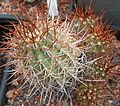 | Copiapoa rupestris F.Ritter | Chile (Antofagasta). |
 | Copiapoa serpentisulcata F.Ritter | Chile (SW. Antofaga to NW. Atacama). |
 | Copiapoa taltalensis (Werderm.) Looser | Chile (SW. Antofagasta). |
| Echinopoa Doweld | 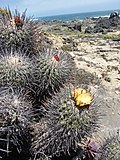 | Copiapoa coquimbana (Karw. ex Rümpler) Britton & Rose | Chile (SW. Antofagasta to Coquimbo) |
|---|
| Copiapoa corralensis I.Schaub & Keim | Chile (Atacama) |
 | Copiapoa echinoides (Lem. ex Salm-Dyck) Britton & Rose | Chile (Atacama to NW. Coquimbo). |
| Copiapoa fiedleriana (K.Schum.) Backeb. | Chile (SW. Antofagasta to NW. Coquimbo) |
| Copiapoa fusca I.Schaub & Keim | Chile (Atacama). |
| Copiapoa malletiana (Cels ex Salm-Dyck) Backeb. | Chile (Atacama) |
| Copiapoa pendulina F.Ritter | Chile (Coquimbo) |
| Copiapoa schulziana I.Schaub & Keim | Chile (Atacama). |
|






















